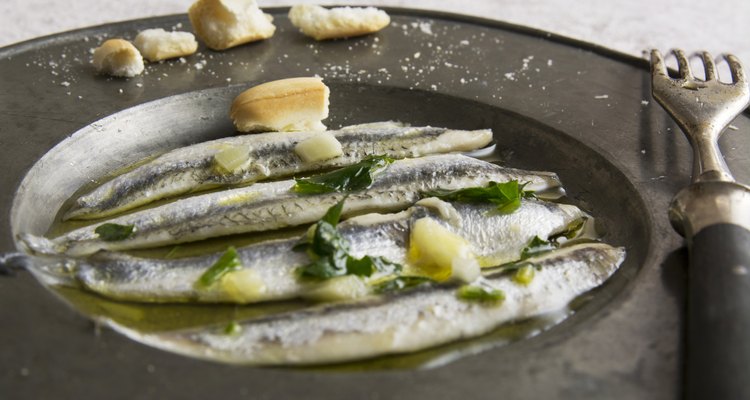
saquizeta/iStock/Getty Images
DMAE has gotten attention over the last few years for improving mental clarity and alertness. It has also been promoted as an antiaging skin care nutrient. This growing interest in DMAE has many wondering how to get more of it naturally in their diet. Only a few foods contain it, however. Knowing which foods, and adding them to a well-balanced diet, can help you reap the benefits of this potentially valuable nutrient.
The Importance of DMAE
DMAE, or 2-dimethylaminoethanol, is a substance found naturally in the brain in small amounts. It is hypothesized to be a precursor to acetylcholine, a neurotransmitter found throughout the nervous system. Acetylcholine is involved in proper nerve function as well as learning and memory in the brain. Therefore, consuming DMAE may generate increased amounts of acetylcholine in the brain, thus potentially leading to improved cognitive function. DMAE has most recently been advertised as a way to reduce wrinkles and sagging skin. However, this effect has never been tested in a clinical study.
Foods that Contain DMAE
DMAE is produced by the body but can also be found naturally in salmon, anchovies, and sardines. You can easily add these three fish to your diet. Salmon can be purchased fresh, frozen, canned or smoked. Anchovies, a common salt-water fish found in the Atlantic, Indian, and Pacific Oceans, can also be purchased canned or in a paste. They are very popular in Mediterranean dishes. Many people don't realize that recipes calling for Worcestershire or remoulade sauces also contain anchovies as one of the ingredients. Sardines or pilchards are a small, silvery, oily fish often confused with anchovies. They are available both fresh and canned as well and can be added to a variety of recipes.
The Amount of DMAE in these Foods
There is not a tremendous amount of recent data available on the specific content of DMAE in each type of fish. However, a 1959 study published in “Nature” reported that there are approximately a few milligrams of DMAE per pound of seafood ingested. Therefore, simply increasing the amount of DMAE-containing foods you eat can increase the amount of DMAE available for the brain and body to use. Additionally, ingested DMAE, whether from foods containing the nutrient or from taking a supplement, will be used by the brain because it is able to cross the blood-brain barrier.
Safety Concerns with Farmed Fish
Reports of high levels of mercury in seafood have understandably put a damper on fish consumption, especially salmon. Nutrition experts and doctors highly recommended eating wild salmon rather than farmed. A 2004 study in the journal “Science” reported that farmed salmon contained significantly higher levels of PCBs and other environmental toxins than wild-caught. This prompted recommendations of eating no more than two meals per month, or 8 oz. of farmed salmon. Therefore, those who want to obtain more DMAE in their diet may also consider the option of DMAE supplements, if wild sources of salmon are not easily accessible.
Related Articles

A List of Foods That Contain Choline

Difference Between Tilapia Loin and ...

Side Effects of Monosodium Glutamate

Canned Tuna Vs. Fresh Tuna

How to Cook Ahi Tuna on a Frying Pan

Is Orange Roughy Safe to Eat?

How to Find a Prison Inmate in ...

Is Grocery Store Fish Safe for Sushi?
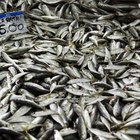
Jack Mackerel Omega-3 Nutrition
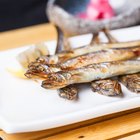
How to Cook Shishamo Fish

Is it Healthier to Cook Salmon With Its ...

How to Store Opened Anchovies

Can You Cook Sushi-Grade Salmon?
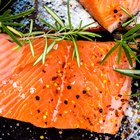
Baked Salmon Filet Nutrition Information

How to Cook Sardines in the Oven
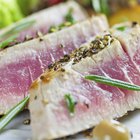
Tuna Steaks Nutrition

Yellow Tail Tuna and Omega 3
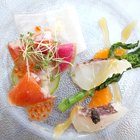
Nutrition of Red Snapper Vs. Tilapia

Nutrition Information on Blueberries

The Benefits of Tuna & Omega-3 Oil
References
Writer Bio
Rose Haney received her joint doctoral degree in clinical psychology from San Diego State University and University of California, San Diego. Her clinical and research specialties are neuropsychology and neuroimaging. She has been published in several scientific journals and has presented her work at numerous national conferences. She has been freelance writing since 2008.
Photo Credits
saquizeta/iStock/Getty Images